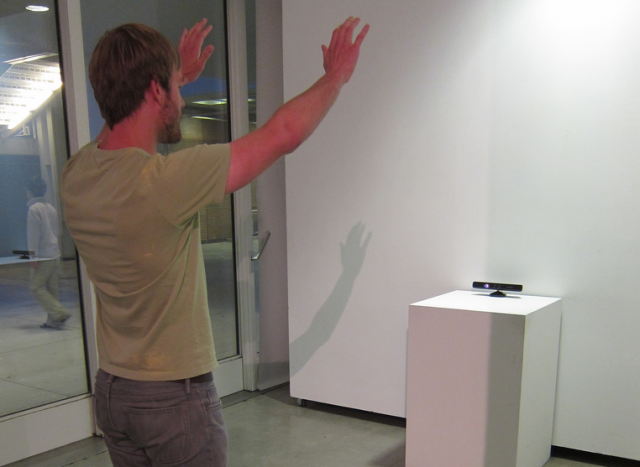Microsoft is embracing the DIY future with a special version of the Kinect hardware and firmware made just for Windows.
That means it will soon be even easier for tinkerers to create PC-based programs that turn them into giant blob-men or give them enormous virtual breasts. Or, on the less silly side, developers could more easily use Kinect to give robots 3-D vision using Windows-based development tools instead of janky code downloaded from god knows where.
The new Kinect hardware for Windows will have relatively minor modifications. It will have a shorter USB cable and a special USB adapter, to ensure better compatibility with standard USB hardware. And its firmware will include a special “Near Mode” to allow the Kinect sensors to work at closer distances, as little as 50cm with good fidelity or 40cm with some degradation. That means Kinect will work better for people who are sitting close to it, in front of computer monitors, rather than across the room, as it was originally designed to be used.
Kinect is Microsoft’s unusually hackable 3-D scanner/sensor, originally made for the Xbox 360. Its sophisticated combination of visual and infrared cameras make it a powerful device for sensing the size and shape of a room, the posture and movements of humans within it, and for detecting and recognizing voice commands as well as gestures. Shortly after its launch in November, 2010, hackers quickly discovered that it was fairly easy to hack the Kinect, which has a standard USB interface, reverse-engineering it to make it work with non-Xbox hardware. After an initial period of knee-jerk disapproval, Microsoft decided to embrace the Kinect-enabled future, going so far as to release a software development kit for Kinect programmers, in June, 2011. Microsoft chief executive Steve Ballmer has even touted the potential for Kinect programming, saying the platform will be increasingly open to developers.
Image credit: Matthew Miller/Flickr
Related articles
- Microsoft and TechStars launch Kinect startup accelerator (venturebeat.com)
- Ballmer: Kinect platform will highlight new era of innovation, openness (venturebeat.com)
- How Microsoft designed Kinect to withstand gamers and lightning strikes (venturebeat.com)
VentureBeat's mission is to be a digital town square for technical decision-makers to gain knowledge about transformative enterprise technology and transact. Learn More


